Re-invent Meetings during Covid-19, Nov 2020
- 13/05/2021
The company XXX (name changed due to privacy agreement) reached out to me looking for help to create a better online environment for their employees during the Covid-19 pandemic. They had some initial observations concerning their employees’ mental health, and ideas why such things were happening, but needed proper research and understanding, as well as ideation, to propose long-term, effective changes. My expertise in design thinking, social projects, and my sunny disposition even online were what convinced them to hire me for this project. Below is a breakdown of what happened.
RESEARCH GOAL
XXX (name changed due to privacy rules) is a popular software platform for developers. XXX is based in the Netherlands but has a significant employee base in the USA (overall approx. 1500 employees). XXX noticed that with more meetings online, they also last longer, employees are experiencing “Zoom fatigue,” and there seems to be “no break” for anyone. XXX would like to get a better understanding of the current times in relation to human behavior at work.
KEY RESEARCH QUESTIONS
- Observe and understand current employer and employees’ behaviors.
- Identify notable habits, preferences, barriers that influence the way meetings are organized, distributed, and performed.
- Identify the opportunities to improve the current situation.
METHODOLOGY
3-week study to understand the current situation, define the problem, ideate and test solutions. Additional week to verify and observe the results. Final check-up meeting after 3 months.
Week 1: Understand.
Interviews (CEO, manager, employees).
Silent observation.Week 2. Define.
Research analysis.
Problem Statement.Week 3: Ideate and Test.
How Might We questions.Week 4: Evaluate.
Interviews.
Observation.
Week 1: Understand
General situation overview (based on all interviews)
There are no official rules on how to handle meetings in the current situation – some teams have coffee meetups each morning or evening, some don’t; some have drinks every Friday or play online games regularly as a team. There are All Hands calls every two weeks for smaller teams, and every month for the entire company, and employees are encouraged to ask questions about any topic via Slack. Some managers have team members in different time zones (in most of those, the meetings are during a time suitable to one time zone only, and I have not identified a team that would change the times of those coffee meetups or have another way to accommodate team members from other time zones). HR team is only accessible via email (there is no Slack channel dedicated to HR).
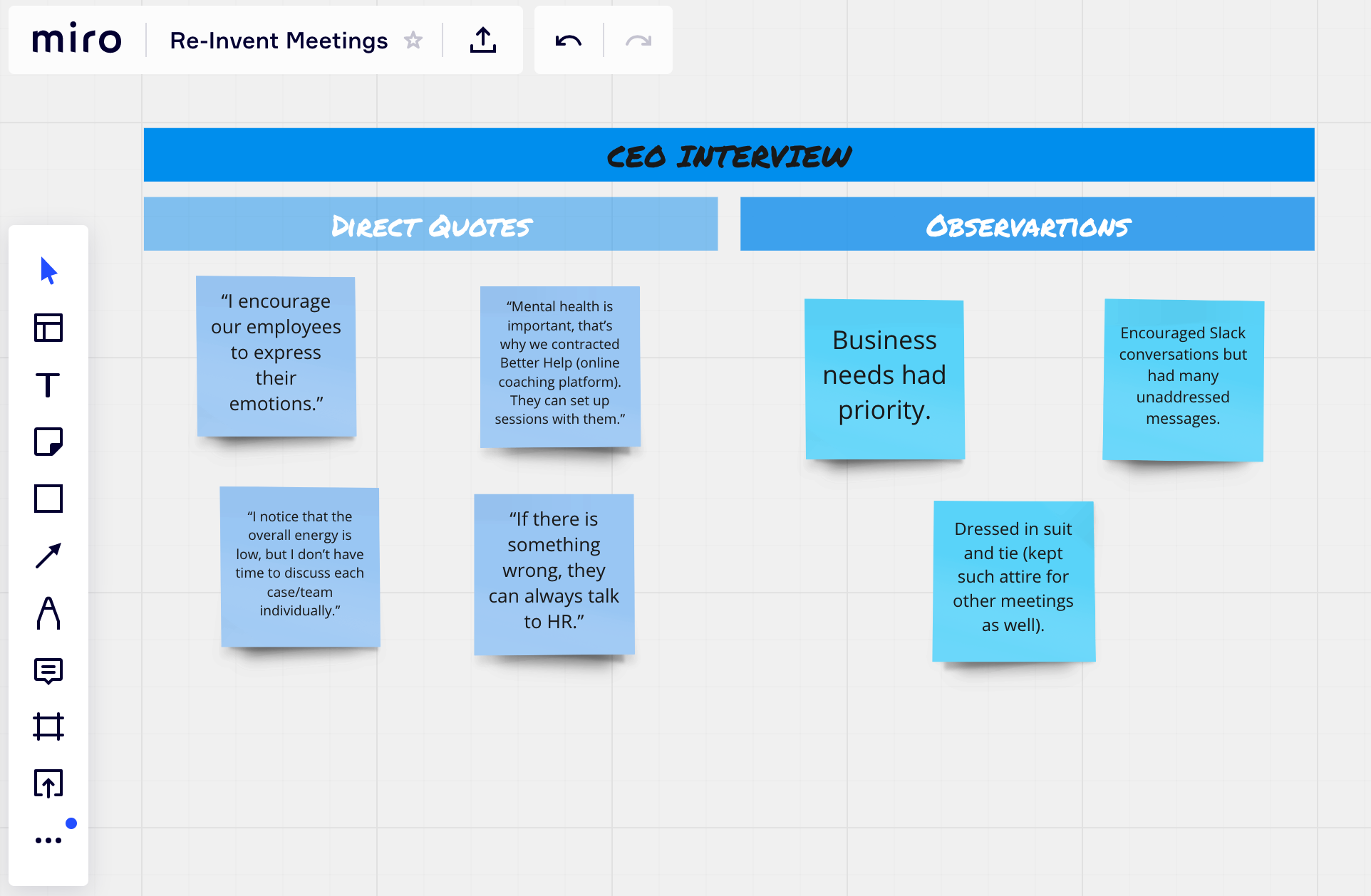
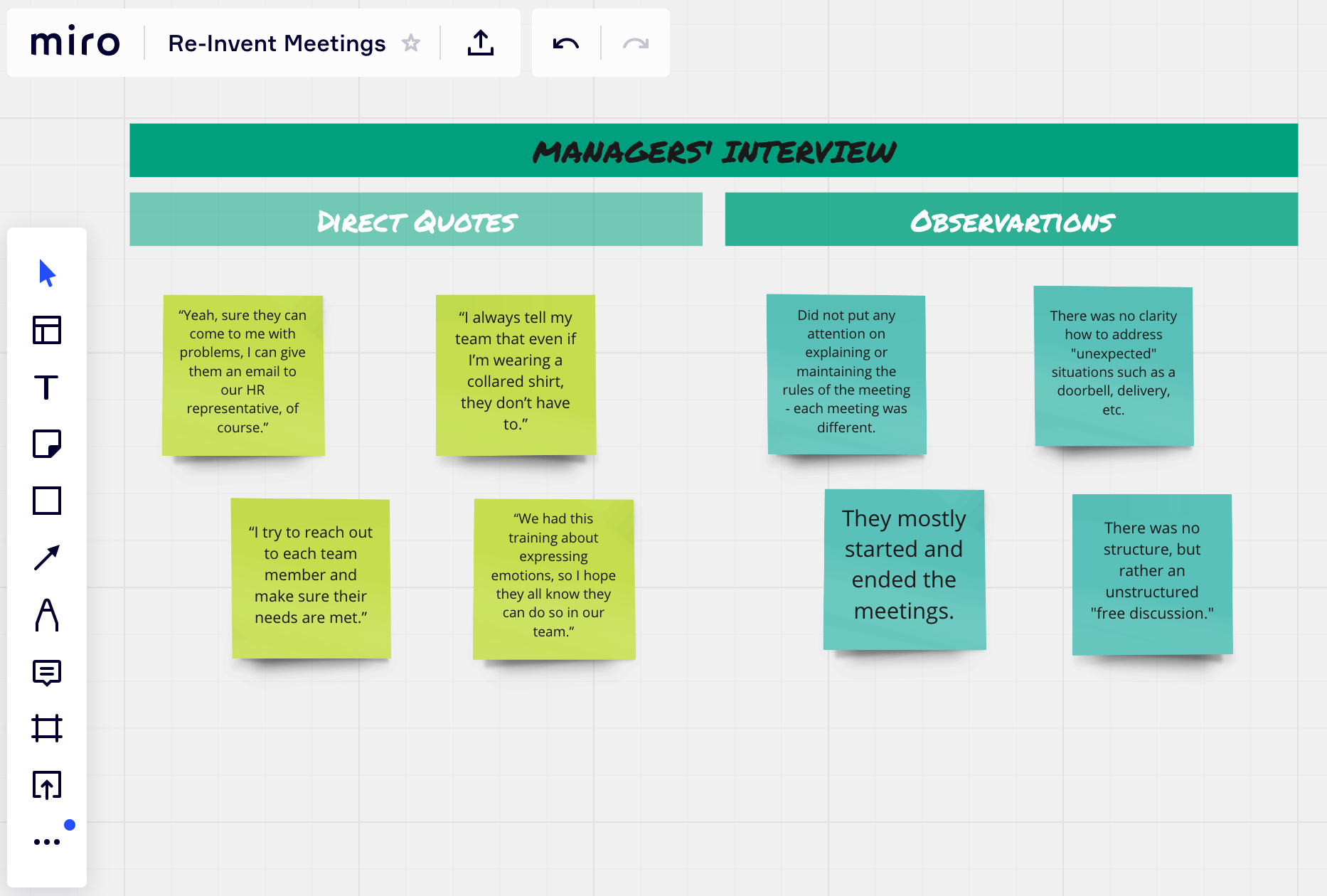
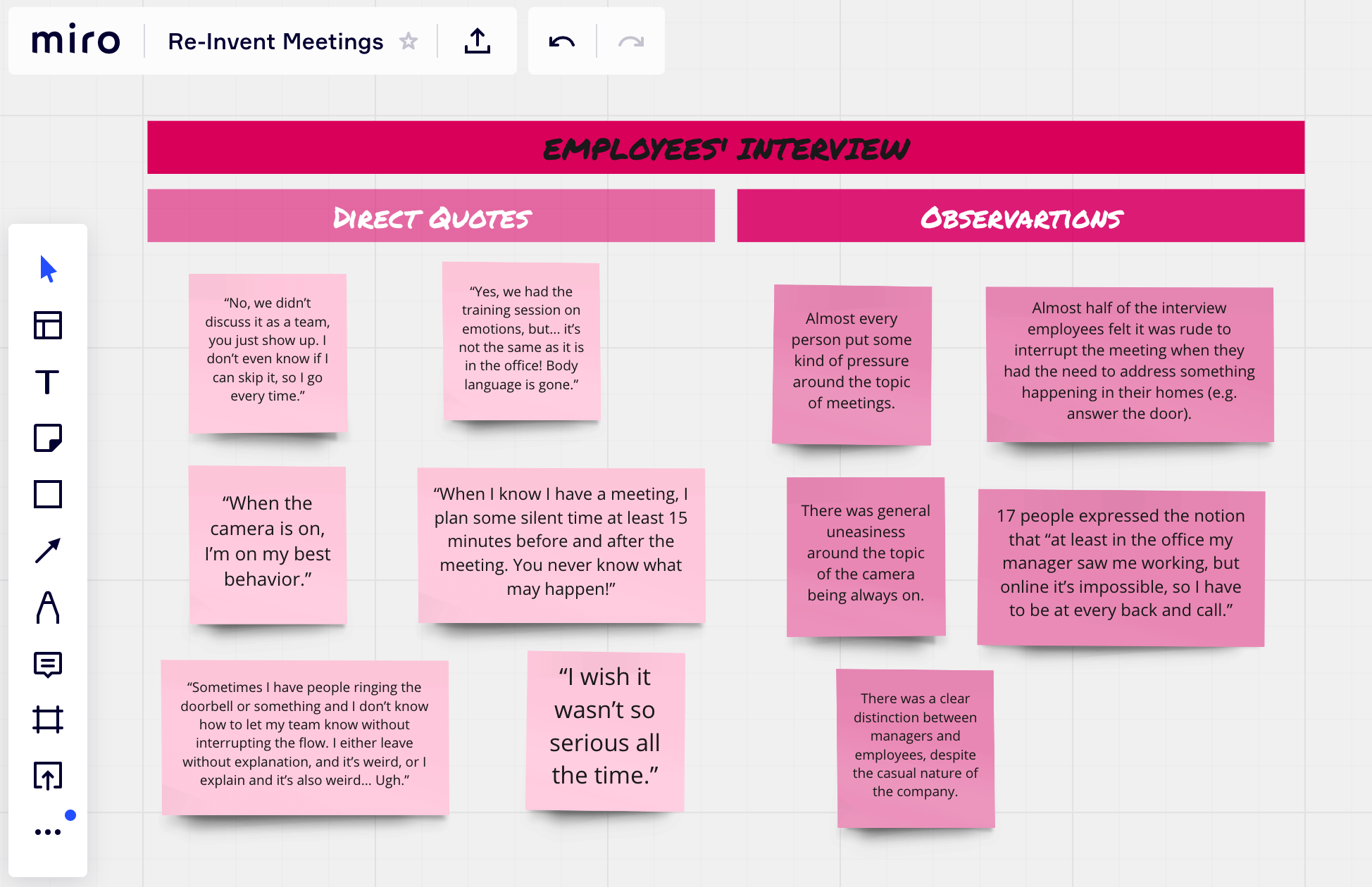
Silent observation
99% meetings had a camera on, and this setting has not been discussed (the manager had it on, so all other people put it on as well).
In most meetings, the small talk took over 10 minutes of the meeting.
In most meetings, there was no agenda or schedule in the meeting invitation. Usually, not even one sentence about the goal of the meeting, nothing.
In half of the meetings, the interruptions were not explained but were given attention (e.g. wandering kids, cats, etc.). In the other half, there was always someone who commented or told a joke about it, and it was not addressed by the managers themselves.
Purpose-To-Practice (P2P)
For the duration of the project I’ve been building an example of P2P worksheet, build from the ideas and opinions of the participants. The purpose was to show how and why they should strive for structure. On each level, everyone as asked to fill add their own ideas in their “silent notebooks” so we can use it later in the evaluation.
(More about P2P: https://www.liberatingstructures.com/33-purpose-to-practice-p2p/)
Here is the preliminary sketch, the rest was used as “food for thoughts” and retrospective (see Week 4):
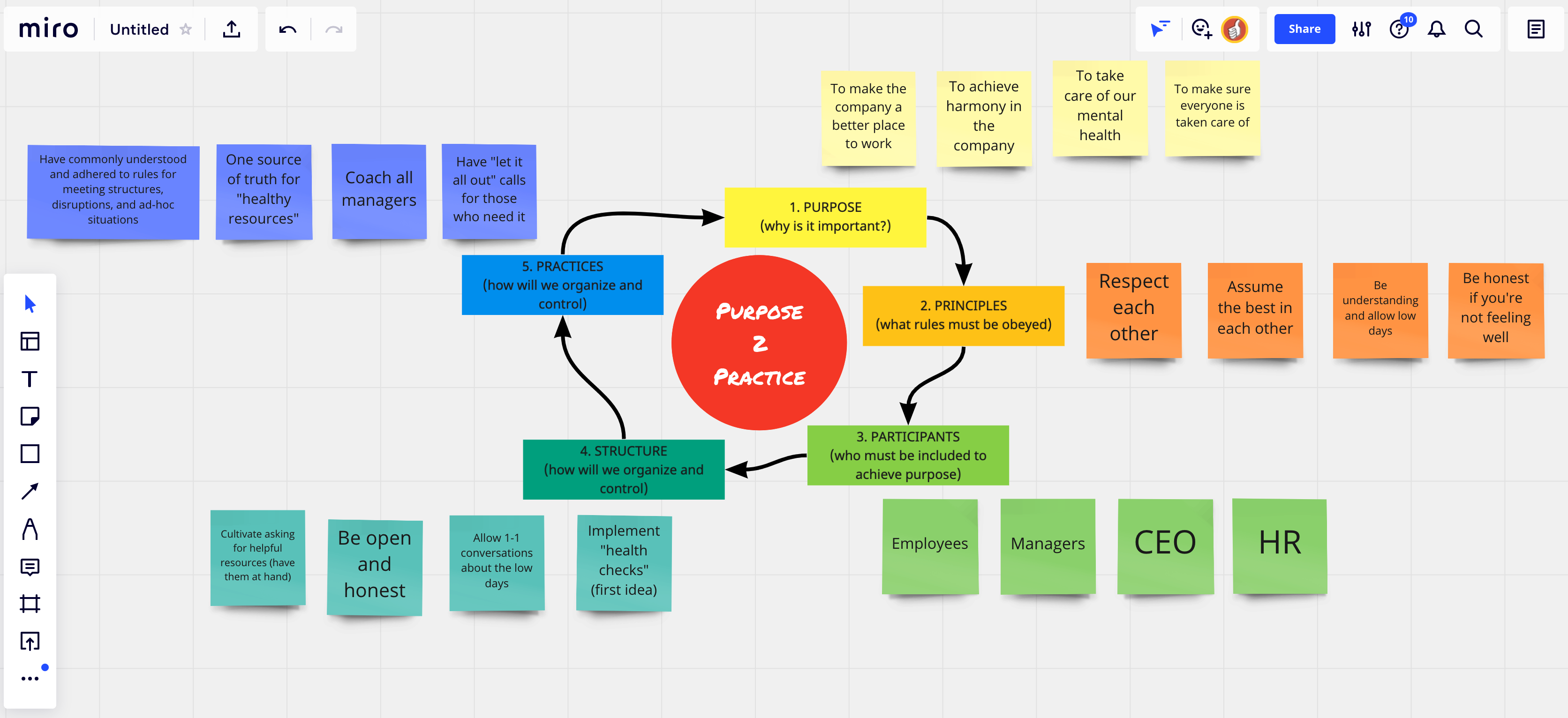
Week 1: Defne
Themes identified
> Rules are unclear – and it confuses the employees.
> Hierarchy is uneven – and that caused people to feel pressure to “appear” in a certain way in from of their bosses.
> Language differences were also the cause of unclear rules as well.
> Stress from the lack of visible work added to the stress during/after the meetings.
Problem Statement
The employees are trying to have productive and healthy meetings, but it’s difficult to implement healthy habits because the lack of regulations and clear expectations make them feel obliged to a certain standard.
Week 1: Ideate and Tes
HMW Questions
> How Might We make it clear what the expectations for healthy meetings are?
> How Might We make sure employees don’t feel pressured to behave in a certain way?
> How Might We address the disruptions during meetings (e.g doorbells, etc)?
> How Might We level the obligations from both employees and managers?
Ideation
The ideation sessions lasted around 2 hours and included the CEO, 3 managers, and 7 employees. It was done remotely using Zoom and Miro. During the session, the following exercises were used:
> What, So What, Now What? W³
> Silent brainstorming
> Brainstorming
> Affinity diagram (value x time)
FINAL SOLUTIONS
Coaching sessions for manager focusing on
- Expressing equality between meeting participants.
- Separating ego from reality.
- Creating safe space for people to express their needs.
There was a slide deck prepared and commentary based on the following books:
- Creativity, Inc by Ed Cathmull
- Daring leadership by Brene Brown
- Start with Why by Simon Sinek
Below are some ideas covered in the session:
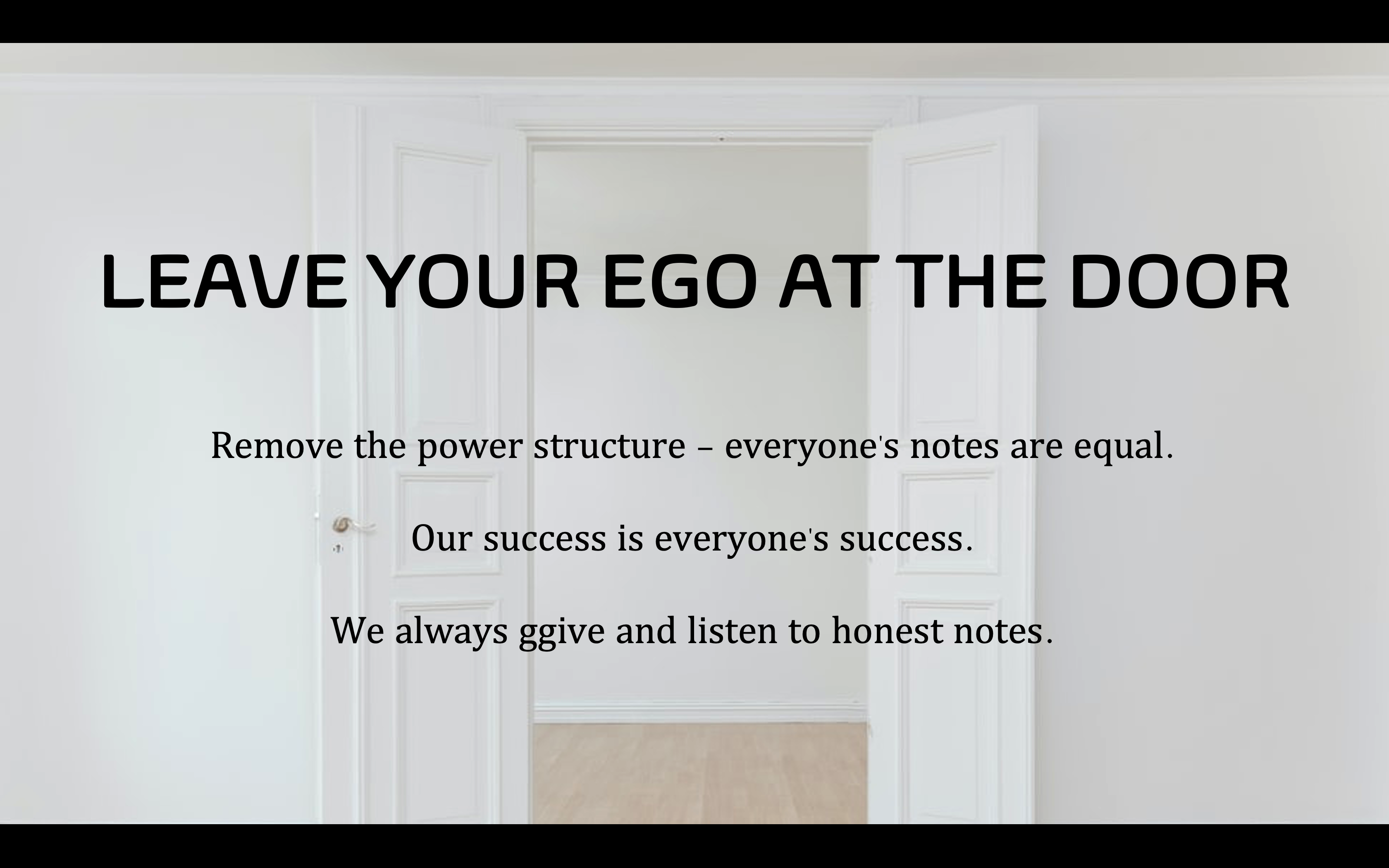
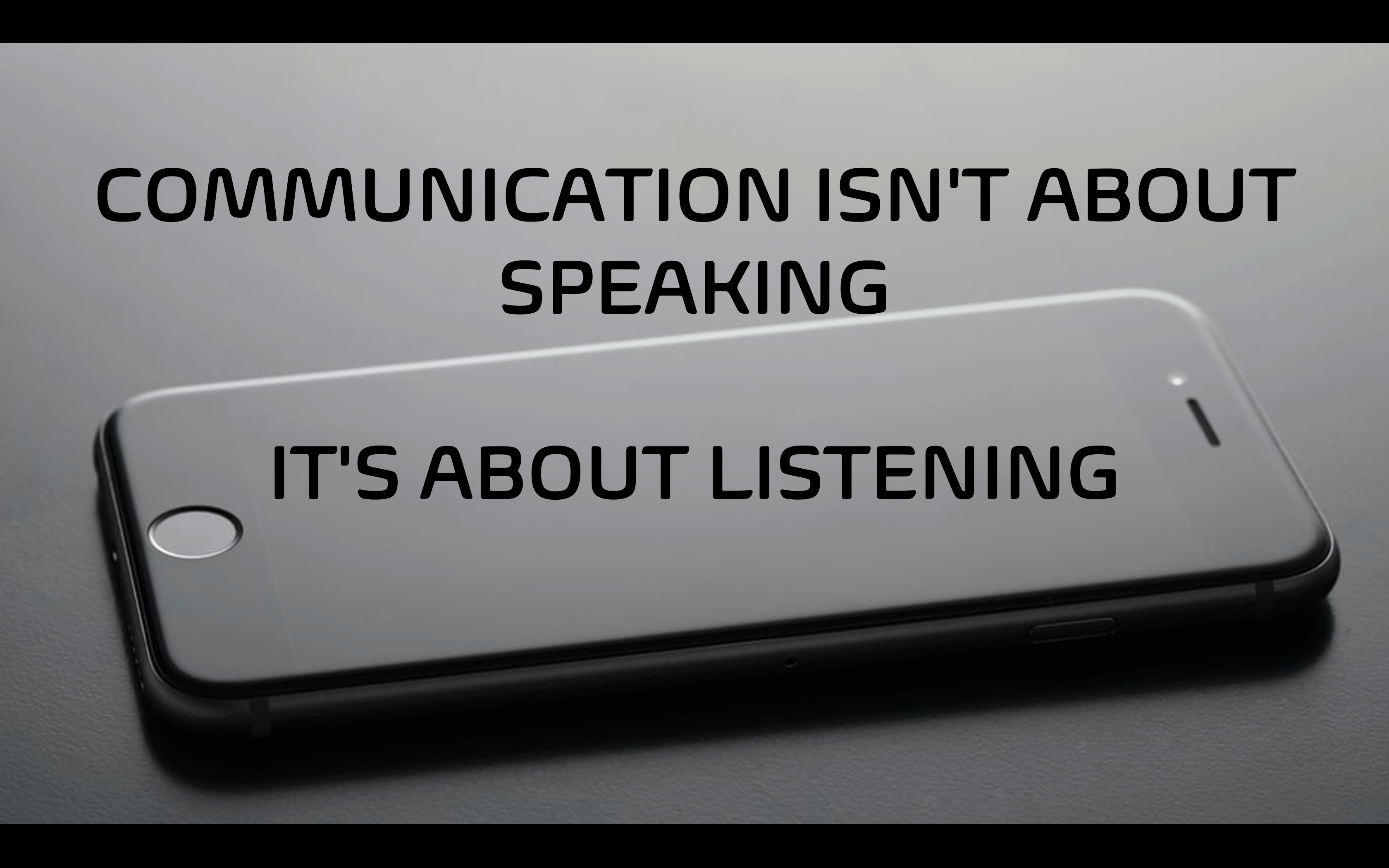

Information cards (ELMO)
ELMO stands for “Enough! Let’s Move On!” and expresses an idea that everyone has the right to express their “feelings” toward how the meeting is going, signal something they need to do, or post a message without interrupting an online meeting.
In the first iteration, 4 teams tested hand-made/printed cards with the following messages:
> Be right back
> Laptop acting up – will restart & join
> Someone has background noise
> Got to go – bye everyone
Currently, the design team is working on specific graphics, and the development team is working on an app to integrate with Zoom. More teams are adapting them, everyone is encouraged to propose their own cards, and there are checkpoint meetings to verify if the teams are comfortable in such settings in the long run.
CONCLUSIONS
During week 4, XXX confirmed that they want to continue using the proposed solutions. 3 managers came back with their own addition to the coaching session slides/ideas. 1 manager proposed setting up resources for growing as leaders and is working on the website.
In update interviews, employees reported a significant growth in confidence to perform needed action (e.g. using the “Be right back” card to seamlessly answer the door), and that’s the biggest change and achievement.
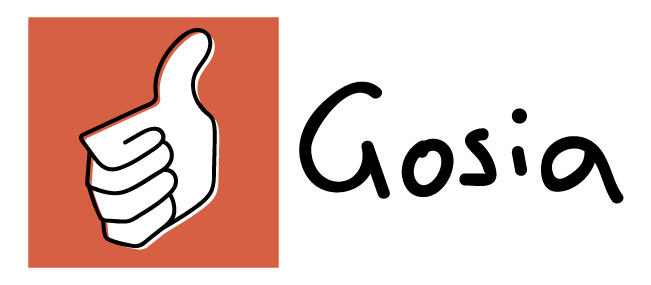
Copyright © 2017-current Gosia Pytel. All rights reserved
Terms and Conditions | Privacy and Cookie Policy || secretcats.pl🧡tworzenie stron internetowych